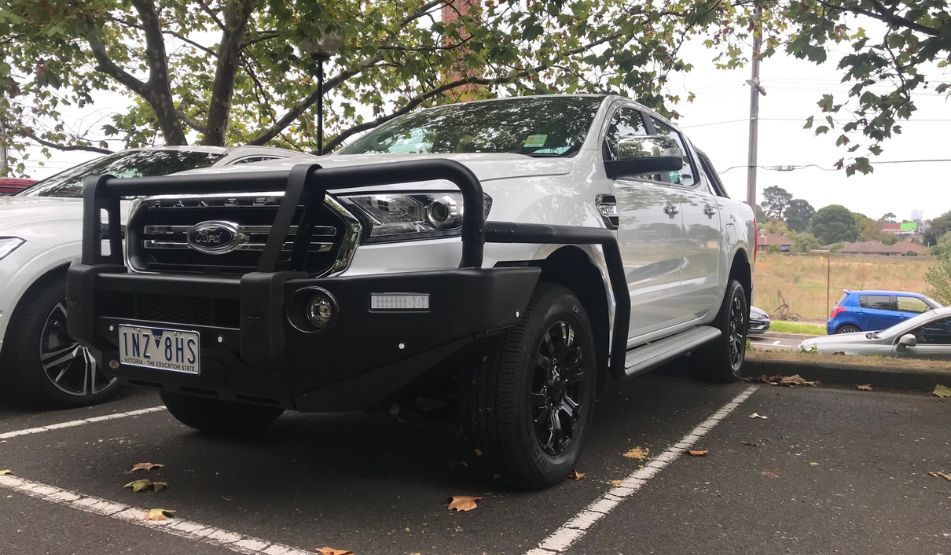How Bull Bars Protect Your Radiator, Lights, and Vital Front-End Gear
29 July 2025
5 Mins Read

- What’s Really at Risk: The Vulnerable Front-End Trio
- Radiator
- Headlights and Fog Lights
- Sensors and Wiring
- The Engineering Behind Bull Bars: Materials and Mounting That Matter
- Material Selection
- Mounting Points
- Shape and Coverage
- Bull Bars vs. Real-World Hazards: Scenarios Where They Save Your Gear
- Strategic Shielding: How Bars Deflect, Absorb, and Redirect Energy
- Keeping the Lights On: Lens, Housing, and Wiring Preservation
- Radiator Preservation: Keeping Your Cooling System in One Piece
- Why Bull Bars Aren’t Just About Looks or Legality
Bull bars cop a bit of flak from those who reckon they’re just ‘for show.’ Yes, they give your rig a bit of snarl. But here’s the truth most weekend warriors and serious tourers already know: that Toyota Hilux bull bar up front is doing a hell of a lot more than posing for Instagram.
Beneath the rugged good looks lies a piece of front-line armour that’s doing the hard yards protecting some of your vehicle’s most sensitive (and expensive) components. We’re talking radiators, headlight arrays, wiring looms, and sensor gear—all the delicate bits crammed into the nose of your 4WD. So, how do bull bars save face while saving your trip?
What’s Really at Risk: The Vulnerable Front-End Trio
Pop the bonnet and have a squiz at how much is stuffed into the front end of your rig. It’s a spaghetti junction of cooling systems, lighting units, and high-tech wizardry, all sitting pretty and waiting for something to ruin their day.
Radiator
This thing keeps your engine from cooking itself alive. A punctured radiator, even from a stray stick or bit of gravel, can lead to overheating within minutes. And when that happens in the middle of nowhere, you’re up the creek without a jerry can.
Headlights and Fog Lights
Modern lighting systems are a far cry from the old sealed beams. We’re talking high-output LEDs, adaptive beam tech, and integrated fog light clusters. Smack one of these, and it’s not just your vision that’s compromised; it’s your wallet.
Sensors and Wiring
Newer rigs are loaded with tech. ADAS (Advanced Driver Assistance Systems), radar, parking sensors, forward-facing cameras—you name it, it’s probably tucked behind your bumper or grille. One little nudge in the wrong spot, and suddenly your dashboard’s lit up like a Christmas tree.
The Engineering Behind Bull Bars: Materials and Mounting That Matter
Not all bull bars are created equal. There’s more science under the surface than just welding up a bit of steel and slapping on some paint.
Material Selection
Steel bars are the heavy hitters—great for deflecting big hits but come with added weight. Aluminium is lighter and still offers solid protection, particularly for those who value fuel economy or aren’t keen on tipping their GVM. Poly bars, while not as strong in direct impact scenarios, offer excellent vibration resistance and won’t rust.
Mounting Points
The way a bar is mounted is critical. A well-engineered setup bolts directly to the chassis rails and spreads load across the vehicle’s structure. This means impact forces are absorbed by the frame, not the crumple zones that protect passengers or, worse, the radiator and lights.
Shape and Coverage
Ever noticed how quality bull bars aren’t just flat plates? The curves, the side wings, the raised central hoop—it’s all designed to redirect energy away from vulnerable bits. A decent one controls the hit, not just take it.
Bull Bars vs. Real-World Hazards: Scenarios Where They Save Your Gear
Let’s talk real-life. The kinds of things you run into—not in a metaphorical sense—in the bush, on station tracks, or even down an overgrown fire trail. This is where the magic of bull bars becomes obvious.
- Brush and scrub impact – That tall grass and those spindly saplings don’t look like much, but they’re exactly the sort of thing that scratches lenses and bends light housings.
- Low-speed off-road nicks – Ever reversed too close to a tree stump or nudged a rock while crawling over a washout? It doesn’t take much to crack a fog light or crumple a corner of the grille.
- Animal strikes – Now we’re talking big hits. Wombats, wallabies, even a rogue cow—if your radiator takes the brunt of that, you’re stuffed. A well-placed bull bar turns a trip-ending disaster into a ‘stop, check, and carry on.’
Strategic Shielding: How Bars Deflect, Absorb, and Redirect Energy
Think of a bull bar like a pre-emptive bodyguard. Instead of waiting for impact to happen, it’s designed to control how energy behaves on contact. Here’s how:
- Deflection – Curved surfaces and angled wings help guide force away from sensitive components. Instead of transferring energy inward, the shape encourages it to flow outward and along the bar’s length.
- Absorption – Quality bars have built-in crumple points or use materials with just enough give to take some of the sting out of a hit. That helps reduce secondary damage behind the bar.
- Redirection – Instead of letting force travel up into the radiator support or headlight mounts, a bull bar’s bracing sends that energy down into the chassis. Smart engineering keeps your systems safe by letting the frame do what it was built to do, which is absorb punishment.
Keeping the Lights On: Lens, Housing, and Wiring Preservation
Apart from helping you see, your headlights and fogs help others see you. And with modern lighting tech, the replacement cost isn’t far off a second-hand motorbike.
- Lenses and reflectors – Bull bars with raised profiles act as a buffer. Whether it’s a low-hanging gum branch or airborne gravel, they’ll hit the bar before your lights cop it.
- Housing mounts – Off-road vibration is a killer. Without protection, the constant shuddering can fatigue plastic mounts until they snap or shift.
- Wiring loops and harnesses – Smart bull bar designs factor in vibration and flex, with bracing and clips to keep wiring from pulling or fraying.
Radiator Preservation: Keeping Your Cooling System in One Piece
If your radiator cops a rock to the guts, you’re not just losing coolant—you’re losing the rest of the trip.
- Grille guarding – Quality bull bars often come with mesh inserts or plates that stop stones and sticks before they make it past the grille. The raised central hoop also acts as a branch deflector.
- Impact buffering – The bar’s geometry spreads load across its bracing, rather than letting a sharp knock focus on one fragile point behind it. That reduces the risk of cracked tanks or bent fins.
- Skid plate integration – Many setups come with lower guards that protect from underneath. That means you’re less likely to crack fan blades, bash lower radiator mounts, or compromise your airflow.
Why Bull Bars Aren’t Just About Looks or Legality
You can dress a bull bar up with lights and flags and make it look the business. But at the end of the day, its real job is protection. Not just for looks, not just for the law, but for your radiator, your lights, your wiring, and your trip.
When you’re out there, far from a servo and relying on your rig to get you home, you want to know your front end’s got backup. And that’s exactly what a bull bar is—quiet, strong, and ready to take the hit so your engine doesn’t have to.


















Comments Are Closed For This Article